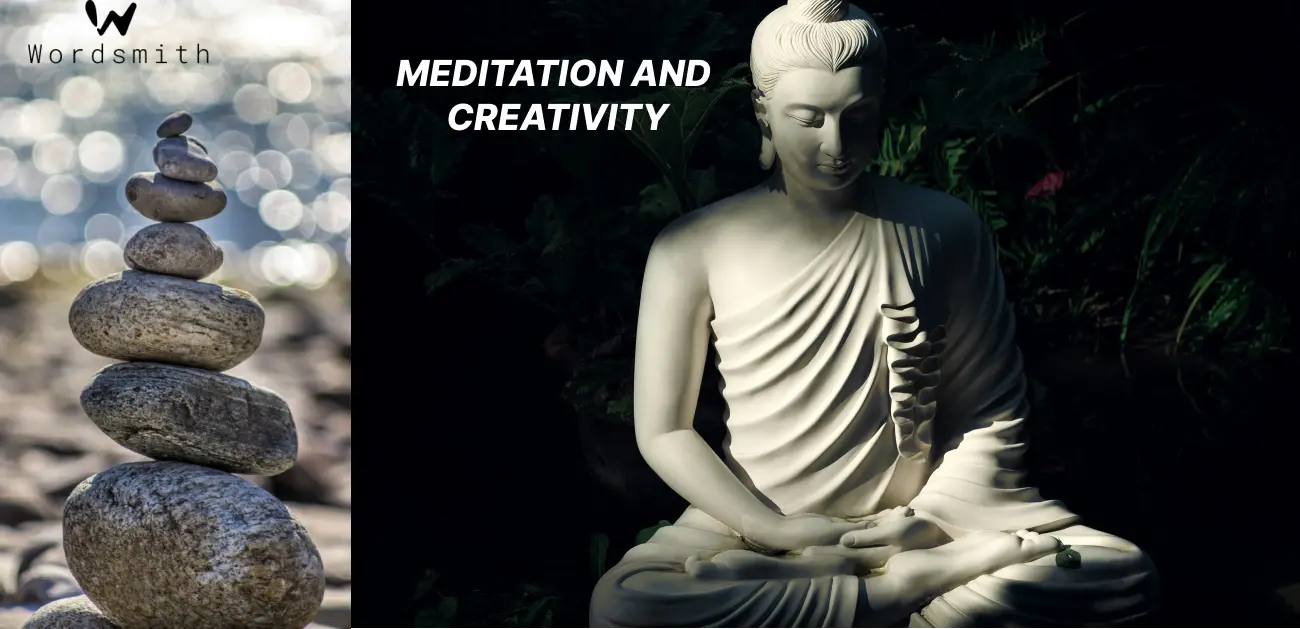Meditation And Creativity
Jaishree D | 29-02-2024 | 04 min read

By opening up this creative space within ourselves, we can enter the flow state, which is characterised by a quiet, undistracted mind that gives us a better understanding of the feelings and ideas that lay underlying our thoughts. and this is the environment where original thought flourishes.
The brain and creativity
We go deeper in the right brain to access our more creative, imaginative, and conceptual thought processes. As if the subconscious regions of the right brain were a kind of creative treasure trove, Western psychology has taught us that accessing these regions is necessary for creativity.
It's not like this when you meditate. There is only one thought. ideas that are creative do exist; we just don't always recognise them because they are located in the same brain regions as our conscious ideas.
No unique key is present.
All we have to do is recognise them. We find access when we are conscious. Once we comprehend that creativity is shared by the left and right hemispheres and is linked by the corpus callosum, a thick band consisting of approximately 200 million nerve fibres, we can apply creative thinking to solve problems, express ourselves, or come up with original ideas for creative works.
Is creativity enhanced by meditation?
There is a significant connection between creativity and meditation. Since creativity requires the use of the entire mind, meditation can help to develop the mind and foster more creativity. Thus, how can we raise our awareness of the imaginative ideas that are always present but aren't quite visible? Alright, picture the mind as a lake. Every active thought that is racing through your mind affects the surface like a stone thrown into the water. The number of overlapping ripples increases with contemplation. The surface of this lake, our mind, is suddenly alive with movement. The calm of the lake has disappeared.
Our inspired and creative thoughts exist underneath the rippling surface; they are just difficult to see because of all the surface movement. We can uncover our inner creativity by using meditation to quiet the surface. At that point, we have the space for our creative impulse to rise to the surface and be noticed. By practicing meditation to train the mind for creativity and focus, we may help it discover the spaciousness necessary for our creativity to flourish.
How might meditation help us be more creative?
In a 2014 study, before beginning any thinking-related tasks, participants, both seasoned and inexperienced, were asked to meditate for 25 minutes. The results demonstrated that you can benefit from meditating without any prior expertise. Actually, the process of meditating can have a lasting impact on our ability to generate new thoughts.
Specifically, two types of meditation have been found to improve creativity: focused attention, which focuses on one thing while blocking out other stimuli, and open-monitoring, which is observing and noting things in the present moment with unrestricted attention. When combined, these meditations activate key factors that generate creativity. Divergent thinking is stimulated by open-monitoring meditation; this type of thinking comes up with original ideas by considering a variety of options. Are you having trouble thinking of inventive uses for commonplace objects like paperclips? That is an example of active divergent thinking. Conversely, concentrated attention exercises the convergent thinking abilities that contribute to the development of practical solutions.
One more creative guided meditation
It's time to give a guided creative visualisation meditation a try if you're prepared to exercise your creative muscles. This increasing creativity guided meditation may be useful if you're seeking to use your creative energies for writing, art, or creative problem-solving. Take a time to settle in, maintaining an upright and comfortable posture.
After then, return to your surroundings.
After then, return to your surroundings. Learn to recognise the various noises and sensations. After taking a few breaths, returning focus to the body. Intune yourself to your body by feeling for any pain. Recall your motivations for practicing meditation today. As you grow more accustomed to your body's response to the breath, turn your focus back to your breathing. In what location do you sense the breath? As you continue to pay attention to the sensation of the breath rising and falling, picture a tiny dot of light in the centre of your chest. Your creative spark is this tiny. It starts to spread out in all directions as soon as you become aware of its presence.
This light speck is brilliant and expansive and keeps growing, expanding first towards your body's boundaries and then out into the surrounding area. Imagine that this dot extends beyond your own immediate area. It's spreading not just over the city but possibly the entire nation, continent, or world. Permit this room to keep growing indefinitely, as far as your imagination will allow it to. While you imagine this, keep your awareness of your breath travelling through the room in and out. Give your mind permission to unwind here, unencumbered by expectations. Simply relax your mind and notice the breath coming in and going out. Give it all of your attention and let it go where it pleases.
Return your focus to your body gradually, feeling its weight and taking in the sights, sounds, and scents of your surroundings. Carefully open your eyes and hold that position for a short while. Appreciate that you are giving yourself these minutes to refresh your creativity.
Popular blogs

Digital Detox - Reconnecting with the outside world
A digital detox is the act of choosing to put down our electronic devices for a while. These might include soci...

How does reading help in staying calm
It requires deliberate effort to make the decision to incorporate reading into your daily routine. It entails s...

Book Review - "Who Moved My Cheese?" by Dr. Spencer Johnson
Who Moved My Cheese? It is my latest read. It's a 93-page read, the story providing a real-life perspective. Th...
Submit a Comment